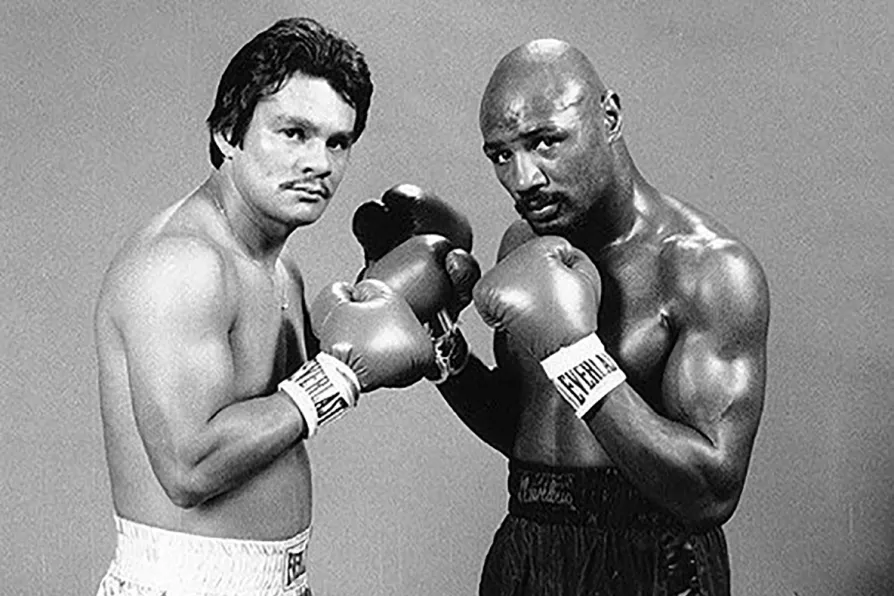
 Roberto Duran and Marvin Hagler
[Creative Commons]
Roberto Duran and Marvin Hagler
[Creative Commons] “I AM not God, but I am something similar.”
These words were once spoken by Panamanian legend Roberto Duran, whose ring name Hands of Stone captured the primal character of a man who faced nothing in the ring that ever came close to what he faced out of it.
Having just defeated his latest and perhaps most deadly opponent, Covid-19, Duran is a man for whom the label ATG (all-time great) most accurately applies — who even in his most humiliating moment — his “no mas” surrender to Sugar Ray Leonard in their 1976 rematch in New Orleans — retained an aura of dignity consonant with the struggle for survival and to escape the grinding poverty from whence he had come.

In recently published book Baddest Man, Mark Kriegel revisits the Faustian pact at the heart of Mike Tyson’s rise and the emotional fallout that followed, writes JOHN WIGHT

As we mark the anniversaries of the Hiroshima and Nagasaki bombings, JOHN WIGHT reflects on the enormity of the US decision to drop the atom bombs

From humble beginnings to becoming the undisputed super lightweight champion of the world, Josh Taylor’s career was marked by fire, ferocity, and national pride, writes JOHN WIGHT

Mary Kom’s fists made history in the boxing world. Malak Mesleh’s never got the chance. One story ends in glory, the other in grief — but both highlight the defiance of women who dare to fight, writes JOHN WIGHT














